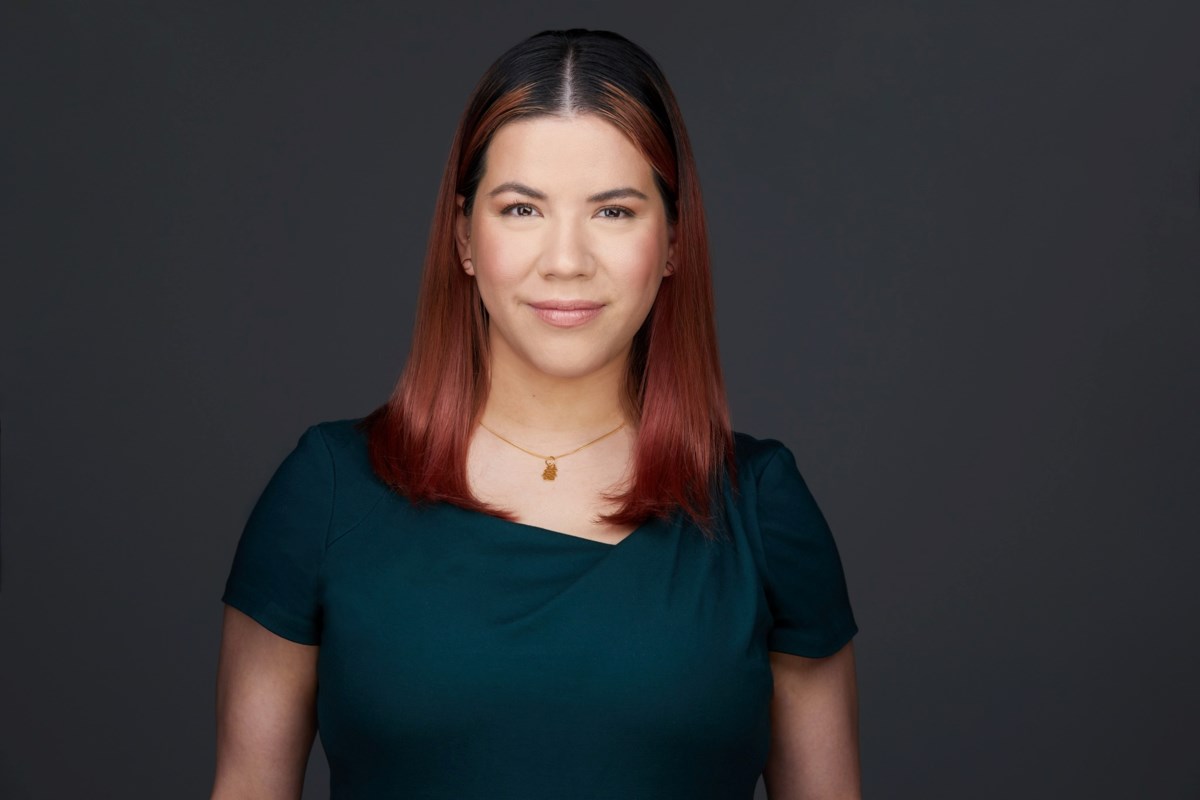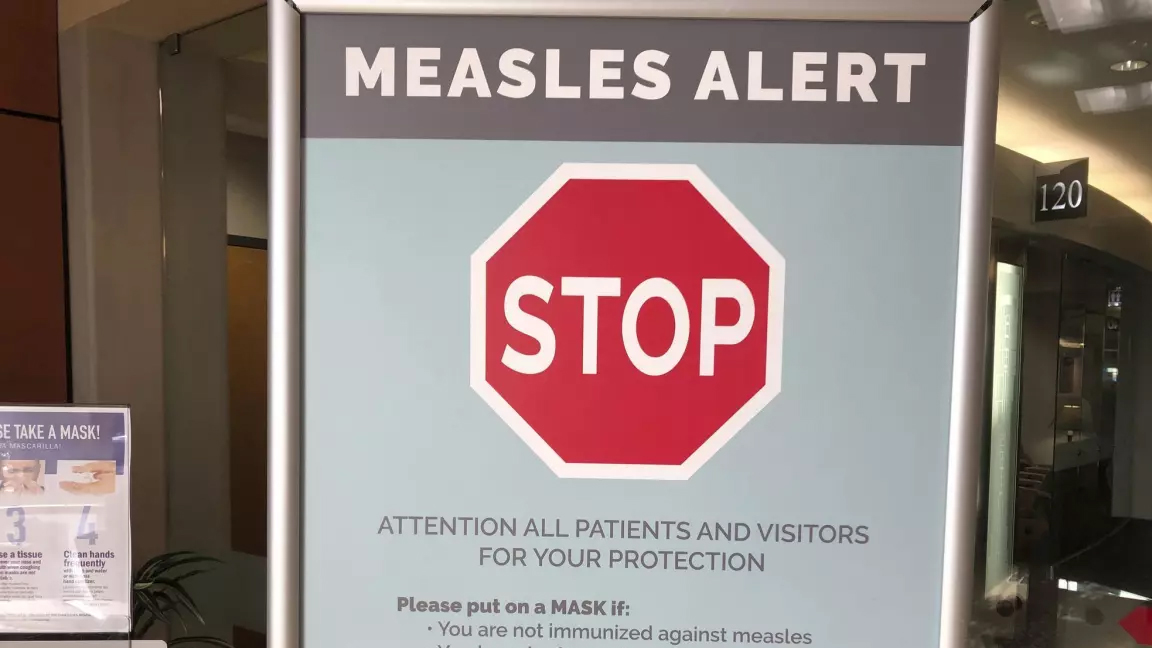Health
COVID long-haulers face stigma as well as lingering symptoms, study shows

|
|
High levels of stigma experienced by some COVID long-haulers are associated with more intense symptoms, reduced physical function and loss of employment due to disability, according to newly published research from a Lancet medical journal.
Specialists working in Edmonton’s Long COVID Clinic began hearing patient stories suggestive of stigma as soon as the clinic became operational in June 2020. They developed a questionnaire designed to quantify the stigma being reported and compared scores to other measures of health and well-being.
Long COVID is characterized by non-infectious symptoms such as fatigue, cough, shortness of breath, brain fog, joint pain, headaches, diarrhea or rashes that persist for longer than three months following acute infection with SARS-CoV-2.
“We found people with higher levels of stigma had more symptoms, lower function, reduced quality of life, and a greater chance of unemployment due to disability,” said University of Alberta professor Ron Damant.
“It’s a constellation of associations all pointing in the same direction: stigma among long COVID patients is real, and it has the potential to negatively impact patient outcomes.”
Fifteen per cent have long COVID symptoms
Statistics Canada reports 1.4 million people so far report long COVID symptoms. They include stigma study participant Daisy Fung, a family medicine physician and U of A assistant clinical professor.
Fung caught acute COVID in March 2020 and is still experiencing extreme post-exertional fatigue and muscle pain. She is diagnosed with post-COVID myalgic encephalomyelitis, characterized by chronic fatigue. A mother of four and a community volunteer, Fung has had to cut back on her work hours, reduce teaching responsibilities, drop volunteer activities and avoid physical activity that worsens her symptoms.
Fung went public with her experiences of stigmatization–even from other medical professionals–in social and traditional media.
“I’ve had lots of comments asking, ‘Why do predominantly women get this? Or only ‘well-to-do’ women?’ which are inaccurate statements,” said Fung. “It felt accusatory, that it’s mental health or malingering or burnout; things that are not true.”
Learning from other diseases
Damant says stigma is a non-medical factor much like poverty, lack of educational opportunities or food insecurity that can have a major impact on physical well-being. His team’s approach to measuring stigma is modelled on similar tools for HIV, AIDS, epilepsy and leprosy.
The long COVID stigma survey was completed by 145 patients, and results were cross-referenced with information from their medical records, such as six-minute walking distance, clinical frailty score, number of other illnesses and number of emergency department visits.
Patients who experienced stigma were found in all demographic categories, but average scores were higher for women, Caucasians and people with lower educational opportunities.
Patients with higher stigma scores were found to have a higher likelihood of more severe symptoms, anxiety, depression, reduced self-esteem and thoughts of self-harm, and were more likely to be unemployed due to disability.
“People said they were not allowed to return to work, ostracized from friends and family, subjected to unnecessary and humiliating infection control measures, accused of being lazy or weak, or accused of faking symptoms,” said Damant.
The clinic and survey are supported by the University of Alberta and Alberta Health Services. While Damant acknowledges the sample size for the study was relatively small, he says the results are significant because it is one of the first quantitative examinations of stigma in long COVID patients. He hopes to refine the questionnaire and test it in other countries.
Patients “are not faking it”
Damant also hopes attitudes will change as more is understood about long COVID and the impact of stigma on patients. He prescribes non-judgmental listening as the first step toward treating patients who experience stigma.
“People are not faking it, they’re not weak, they don’t need to be treated like they’ve got an infectious disease,” Damant said. “The misinformation, the stereotyping, the labelling, just perpetuate stigmatization, so we need to challenge that.”
Fung agrees, realizing her experience with disease-related stigma is not unique. Being a long COVID patient has helped her build empathy and made her more aware of everyone’s inherent biases.
“It’s been a learning curve that’s helped me start to advocate for other patients who may have chronic illness, including long COVID and especially myalgic encephalomyelitis, who have been ignored for decades,” she said. “Kindness can help mitigate the harm.”
Article courtesy of University of Alberta folio





Health
April 22nd to 30th is Immunization Awareness Week – Oldies 107.7


<!–
isIE8 = true;
Date.now = Date.now || function() return +new Date; ;
Health
AHS confirms case of measles in Edmonton – CityNews Edmonton


Alberta Health Services (AHS) has confirmed a case of measles in Edmonton, and is advising the public that the individual was out in public while infectious.
Measles is an extremely contagious disease that is spread easily through the air, and can only be prevented through immunization.
AHS says individuals who were in the following locations during the specified dates and times, may have been exposed to measles.
- April 16
- Edmonton International Airport, international arrivals and baggage claim area — between 3:20 p.m. and 6 p.m.
- April 20
- Stollery Children’s Hospital Emergency Department — between 5 a.m. to 3 p.m.
- April 22
- 66th Medical Clinic (13635 66 St NW Edmonton) — between 12:15 p.m. to 3:30 p.m.
- Pharmacy 66 (13637 66 St NW Edmonton) — between 12:15 p.m. to 3:30 p.m.
- April 23
- Stollery Children’s Hospital Emergency Department — between 4:40 a.m. to 9:33 a.m.
AHS says anyone who attended those locations during those times is at risk of developing measles if they’ve not had two documented doses of measles-containing vaccine.
Those who have not had two doses, who are pregnant, under one year of age, or have a weakened immune system are at greatest risk of getting measles and should contact Health Link at 1-877-720-0707.
Symptoms
Symptoms of measles include a fever of 38.3° C or higher, cough, runny nose, and/or red eyes, a red blotchy rash that appears three to seven days after fever starts, beginning behind the ears and on the face and spreading down the body and then to the arms and legs.
If you have any of these symptoms stay home and call Health Link.
In Alberta, measles vaccine is offered, free of charge, through Alberta’s publicly funded immunization program. Children in Alberta typically receive their first dose of measles vaccine at 12 months of age, and their second dose at 18 months of age.
Health
U.S. tightens rules for dairy cows a day after bird flu virus fragments found in pasteurized milk samples – Toronto Star


/* OOVVUU Targeting */
const path = ‘/news/canada’;
const siteName = ‘thestar.com’;
let domain = ‘thestar.com’;
if (siteName === ‘thestar.com’)
domain = ‘thestar.com’;
else if (siteName === ‘niagarafallsreview.ca’)
domain = ‘niagara_falls_review’;
else if (siteName === ‘stcatharinesstandard.ca’)
domain = ‘st_catharines_standard’;
else if (siteName === ‘thepeterboroughexaminer.com’)
domain = ‘the_peterborough_examiner’;
else if (siteName === ‘therecord.com’)
domain = ‘the_record’;
else if (siteName === ‘thespec.com’)
domain = ‘the_spec’;
else if (siteName === ‘wellandtribune.ca’)
domain = ‘welland_tribune’;
else if (siteName === ‘bramptonguardian.com’)
domain = ‘brampton_guardian’;
else if (siteName === ‘caledonenterprise.com’)
domain = ‘caledon_enterprise’;
else if (siteName === ‘cambridgetimes.ca’)
domain = ‘cambridge_times’;
else if (siteName === ‘durhamregion.com’)
domain = ‘durham_region’;
else if (siteName === ‘guelphmercury.com’)
domain = ‘guelph_mercury’;
else if (siteName === ‘insidehalton.com’)
domain = ‘inside_halton’;
else if (siteName === ‘insideottawavalley.com’)
domain = ‘inside_ottawa_valley’;
else if (siteName === ‘mississauga.com’)
domain = ‘mississauga’;
else if (siteName === ‘muskokaregion.com’)
domain = ‘muskoka_region’;
else if (siteName === ‘newhamburgindependent.ca’)
domain = ‘new_hamburg_independent’;
else if (siteName === ‘niagarathisweek.com’)
domain = ‘niagara_this_week’;
else if (siteName === ‘northbaynipissing.com’)
domain = ‘north_bay_nipissing’;
else if (siteName === ‘northumberlandnews.com’)
domain = ‘northumberland_news’;
else if (siteName === ‘orangeville.com’)
domain = ‘orangeville’;
else if (siteName === ‘ourwindsor.ca’)
domain = ‘our_windsor’;
else if (siteName === ‘parrysound.com’)
domain = ‘parrysound’;
else if (siteName === ‘simcoe.com’)
domain = ‘simcoe’;
else if (siteName === ‘theifp.ca’)
domain = ‘the_ifp’;
else if (siteName === ‘waterloochronicle.ca’)
domain = ‘waterloo_chronicle’;
else if (siteName === ‘yorkregion.com’)
domain = ‘york_region’;
let sectionTag = ”;
try
if (domain === ‘thestar.com’ && path.indexOf(‘wires/’) = 0)
sectionTag = ‘/business’;
else if (path.indexOf(‘/autos’) >= 0)
sectionTag = ‘/autos’;
else if (path.indexOf(‘/entertainment’) >= 0)
sectionTag = ‘/entertainment’;
else if (path.indexOf(‘/life’) >= 0)
sectionTag = ‘/life’;
else if (path.indexOf(‘/news’) >= 0)
sectionTag = ‘/news’;
else if (path.indexOf(‘/politics’) >= 0)
sectionTag = ‘/politics’;
else if (path.indexOf(‘/sports’) >= 0)
sectionTag = ‘/sports’;
else if (path.indexOf(‘/opinion’) >= 0)
sectionTag = ‘/opinion’;
} catch (ex)
const descriptionUrl = ‘window.location.href’;
const vid = ‘mediainfo.reference_id’;
const cmsId = ‘2665777’;
let url = `https://pubads.g.doubleclick.net/gampad/ads?iu=/58580620/$domain/video/oovvuu$sectionTag&description_url=$descriptionUrl&vid=$vid&cmsid=$cmsId&tfcd=0&npa=0&sz=640×480&ad_rule=0&gdfp_req=1&output=vast&unviewed_position_start=1&env=vp&impl=s&correlator=`;
url = url.split(‘ ‘).join(”);
window.oovvuuReplacementAdServerURL = url;
Infected cows were already prohibited from being transported out of state, but that was based on the physical characteristics of the milk, which looks curdled when a cow is infected, or a cow has decreased lactation or low appetite, both symptoms of infection.
function buildUserSwitchAccountsForm()
var form = document.getElementById(‘user-local-logout-form-switch-accounts’);
if (form) return;
// build form with javascript since having a form element here breaks the payment modal.
var switchForm = document.createElement(‘form’);
switchForm.setAttribute(‘id’,’user-local-logout-form-switch-accounts’);
switchForm.setAttribute(‘method’,’post’);
switchForm.setAttribute(‘action’,’https://www.thestar.com/tncms/auth/logout/?return=https://www.thestar.com/users/login/?referer_url=https%3A%2F%2Fwww.thestar.com%2Fnews%2Fcanada%2Fu-s-tightens-rules-for-dairy-cows-a-day-after-bird-flu-virus-fragments-found%2Farticle_985b0bac-0252-11ef-abc6-eb884d6a1f0c.html’);
switchForm.setAttribute(‘style’,’display:none;’);
var refUrl = document.createElement(‘input’); //input element, text
refUrl.setAttribute(‘type’,’hidden’);
refUrl.setAttribute(‘name’,’referer_url’);
refUrl.setAttribute(‘value’,’https://www.thestar.com/news/canada/u-s-tightens-rules-for-dairy-cows-a-day-after-bird-flu-virus-fragments-found/article_985b0bac-0252-11ef-abc6-eb884d6a1f0c.html’);
var submit = document.createElement(‘input’);
submit.setAttribute(‘type’,’submit’);
submit.setAttribute(‘name’,’logout’);
submit.setAttribute(‘value’,’Logout’);
switchForm.appendChild(refUrl);
switchForm.appendChild(submit);
document.getElementsByTagName(‘body’)[0].appendChild(switchForm);
function handleUserSwitchAccounts()
window.sessionStorage.removeItem(‘bd-viafoura-oidc’); // clear viafoura JWT token
// logout user before sending them to login page via return url
document.getElementById(‘user-local-logout-form-switch-accounts’).submit();
return false;
buildUserSwitchAccountsForm();
console.log(‘=====> bRemoveLastParagraph: ‘,0);
-



 Politics21 hours ago
Politics21 hours agoOpinion: Fear the politicization of pensions, no matter the politician
-



 Politics20 hours ago
Politics20 hours agoPecker’s Trump Trial Testimony Is a Lesson in Power Politics
-



 Science20 hours ago
Science20 hours agoNASA Celebrates As 1977’s Voyager 1 Phones Home At Last
-
Media19 hours ago
B.C. puts online harms bill on hold after agreement with social media companies
-
Media13 hours ago
B.C. online harms bill on hold after deal with social media firms
-
Business19 hours ago
Oil Firms Doubtful Trans Mountain Pipeline Will Start Full Service by May 1st
-
Art22 hours ago
Turner Prize: Shortlisted artist showcases Scottish Sikh community
-
Investment21 hours ago
FLAGSHIP COMMUNITIES REAL ESTATE INVESTMENT TRUST ANNOUNCES CLOSING OF APPROXIMATELY US





